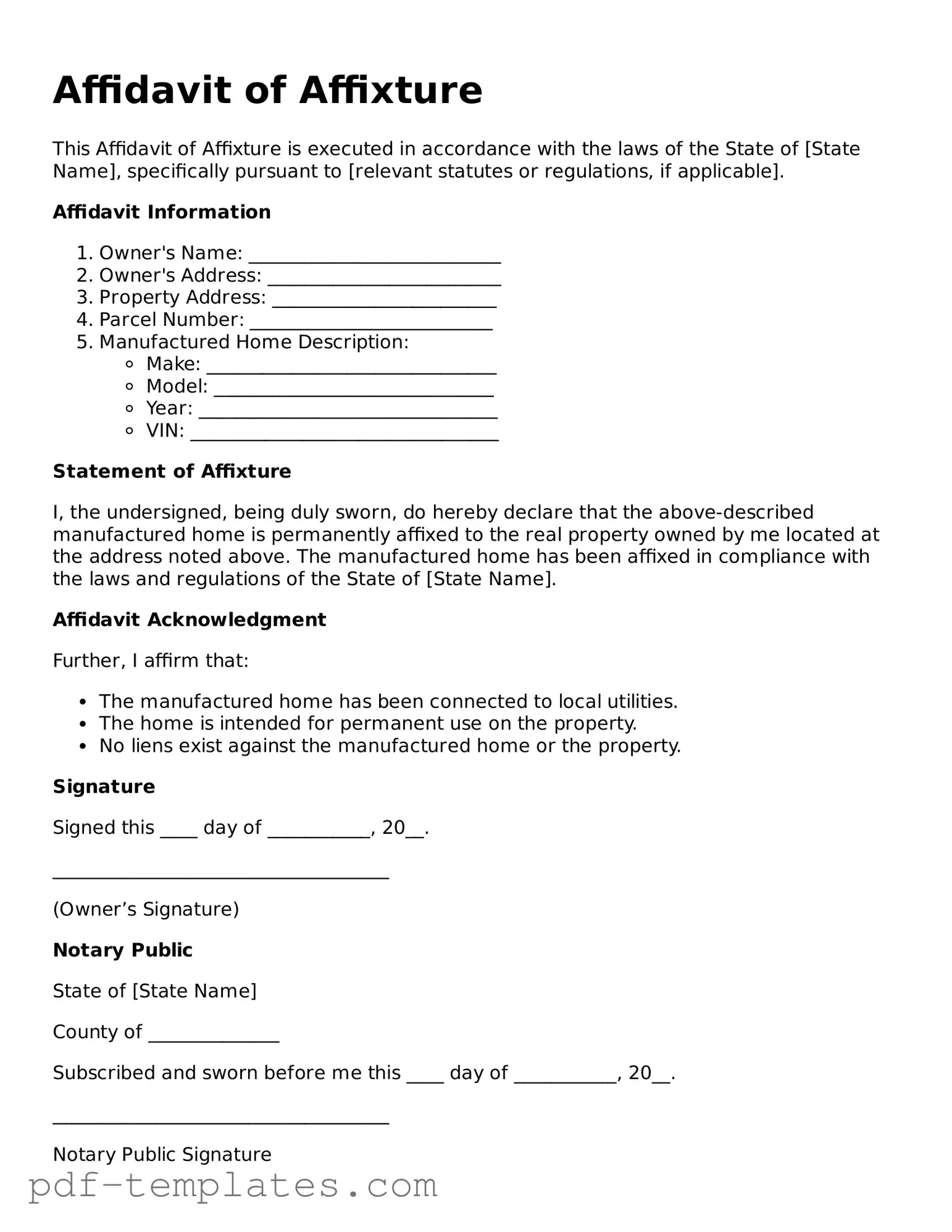The Affidavit of Affixture is similar to a Bill of Sale. A Bill of Sale serves as a legal document that transfers ownership of personal property from one party to another. Like the Affidavit of Affixture, it requires signatures from both the seller and buyer, establishing clear ownership and intent. Both documents provide a formal record of the transaction, which can be important for future reference or legal purposes.
Another document akin to the Affidavit of Affixture is the Title Certificate. A Title Certificate proves ownership of a vehicle or property. It includes details such as the owner's name and the vehicle identification number (VIN) or property description. Similar to the Affidavit, the Title Certificate is essential for transferring ownership and ensuring that the seller has the right to sell the property or vehicle.
The Deed is also comparable to the Affidavit of Affixture. A Deed is a legal document that conveys real estate ownership from one person to another. It contains information about the property, including its location and boundaries. Like the Affidavit, a Deed must be signed and often notarized to be valid, serving as an official record of ownership transfer.
The Lease Agreement shares similarities with the Affidavit of Affixture as well. A Lease Agreement outlines the terms under which one party rents property from another. It details responsibilities, payment terms, and duration. While the Affidavit deals with ownership, both documents are critical in establishing rights and obligations related to property use.
The Power of Attorney is another document that resembles the Affidavit of Affixture in its legal implications. A Power of Attorney grants one person the authority to act on behalf of another in legal matters. Both documents require careful consideration and signatures to be valid, ensuring that the intentions of the parties involved are clearly documented and legally binding.
The Warranty Deed is closely related to the Affidavit of Affixture as well. A Warranty Deed guarantees that the seller holds clear title to the property and has the right to sell it. Like the Affidavit, it protects the buyer by ensuring that no other claims exist against the property. Both documents are vital in real estate transactions to establish trust and transparency.
The Quitclaim Deed is another document that functions similarly to the Affidavit of Affixture. A Quitclaim Deed transfers any ownership interest the grantor may have in a property without guaranteeing that the title is clear. While it does not offer the same level of protection as a Warranty Deed, it is often used in situations where parties know each other well, such as family transactions. Both documents require proper execution to be effective.
In understanding the complexities of property ownership, it's crucial to consider the role that various legal documents play, including the California Self-Proving Affidavit form, which not only simplifies the probate process but also reassures heirs about the validity of the will. This document, similar in essence to an Affidavit of Affixture, underscores the necessity of clear ownership declarations. A reliable resource for learning more about this form is smarttemplates.net, offering essential information for those navigating the intricacies of property and estate management.
Finally, the Mortgage Agreement is akin to the Affidavit of Affixture in that it involves property and legal obligations. A Mortgage Agreement outlines the terms of a loan used to purchase real estate, detailing the borrower's responsibilities and the lender's rights. Both documents are essential in securing and establishing legal rights related to property ownership and financing.
